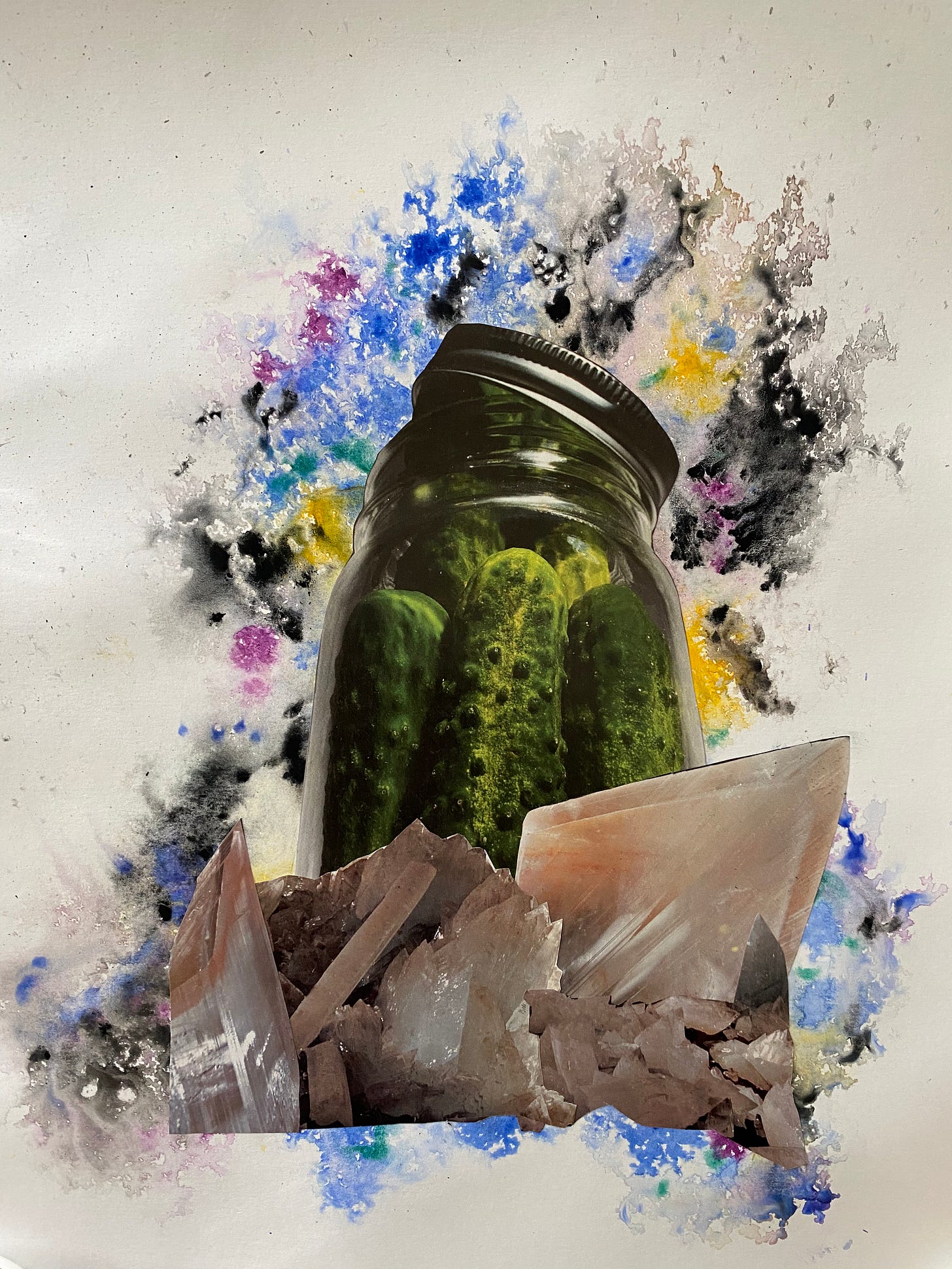
Last year, I wrote about flowerkraut and tea-based kraut. In a recent conversation, I noted that the process of making and writing about these foods also made me think about reciprocity and creativity, how those concepts interweave into my work.
Our concept of food connecting to everything doesn't have to be just emotional or historical: These connections are rooted in the physical world, and thus those emotional, historical, and community connections are too.
Science tells us, for example, that we, and the food we make, all contain star stuff (to paraphrase the famous quote from Carl Sagan). We also know that the microbes we work with in our kitchens evolved alongside us, and we evolved from microbes, connecting our culinary and fermentative practices back deep in time.
This is why I and others often refer to fermentation as a universe in a jar: You are connected to space, and time, to all the hands that made that food before you, to the microbes of whatever place you're in: Your jar contains microcosms and macrocosms.
Context matters for food and words
When I write about food I have these sorts of contexts in mind, and it can be a challenge (though a fun one) to consider how to bring the idea of everything being truly, deeply interconnected into writing about say, food preservation.
Certainly the concept applies there, but not every reader is coming to my work looking for philosophical musing on the nature of fermentation and the universe.
Maybe they just want a recipe for pickled carrots, y'know?
Writing about food presents an interesting challenge too because no writer can write to every reader, and yet we often have to consider a few kinds of readers who we would include in our audience.
We all approach this in different ways, but for me, I find it's helpful to maintain a practice where my work is allowed to manifest in a few different ways.
My in-progress preservation book and my food waste courses, for example, are primarily geared towards hands-on practice: People can take the words written there and apply them to a particular ingredient or problem in their kitchen, or add new techniques to their repertoire.
But even in these, I include some of my historical, theoretical, and interdisciplinary perspective: on sustainability as a mindset, for example, or on viewing food preservation as a form of community care.
I think there's incredible value in situating our recipes within their contexts, and to helping people foster their own personal connections with their foodmaking practices. So even if you're just coming to me for a single recipe, I hope you'll leave with something a bit more.
Finding an outlet
As for many writers, this newsletter is more of my playground, where I can put my ideas and creations that maybe don't have a clear home elsewhere.
I find it generative and fulfilling to have a space to just flesh out ideas and give myself permission to turn my "where do they belong?" pieces into completed works, like my essays on food as information/object or grief and vinegar.
At the very least, the practice of engaging with my writing from beyond the perspective of "is this publishable"/"can I find an outlet for this" lets me grapple with my own ideas more freely: It gives me permission to explore my ideas based upon their own merit and my own interest in them, rather than on external metrics or validation.
My biggest, most interesting ideas are given the time of day because I have somewhere to put them. And, I find that those pieces I most worry about publishing (the anxiety I felt around sharing that grief piece!) tend to be the ones that resonate most.
Macroscopic / Microscopic
So how does this relate to reciprocity and to sauerkraut with flowers in it, you ask?
It goes back to exploring the massive and the microscopic, allowing both to exist and be held in the same place.
And recognizing that these things exist outside of this moment, outside of this one context we can see: They contain within them all their moments past and future. And they contain within them star stuff and microbes, as do we.
My fermentation practice has profoundly influenced my writing practice and perspective on the world, and this is just one example of how.
My Process Pieces series is a space where I seemingly focus solely upon an actual, physical process in the kitchen: How I label food, how I experimented with making banana chips, etc.
But the processes in the kitchen stretch beyond it, too, as we all know well. It's a joy to see where those processes might lead me next.
Flowerkrauts are about layering, and it's in those layers, which create a sum of their parts greater than themselves, that I've been exploring the interplay of my writing and creative practices with my culinary practice.
In all cases, I'm considering the micro-scale and the macro-scale: And importantly, the interactions between them. In flowerkraut, we have the microbes as well as the flavor and aroma of the flowers and herbs alongside the more familiar flavor and aroma of the ferment. We have the theoretical (we know some flavors for sure go together, others maybe not) and the experiential (it turns out that mint family members are better in sauerkraut than I expected!)
In my writing, I'm working at the intersection of the theoretical and experiential too: Writing is, like cooking, an act of making and remaking, imagining and reimagining. I am not simply describing the world as it is: I am offering the possibility of momentum in a new direction, or the possibility of discovery.
Next week, I'll dive more into how preparing these foods expanded my thinking on reciprocity and creation (and how that impacts my cooking and my writing).





Great photo, Julia. The deck looks amazing.